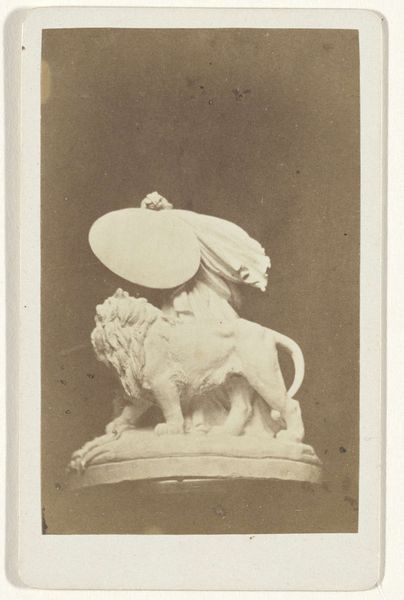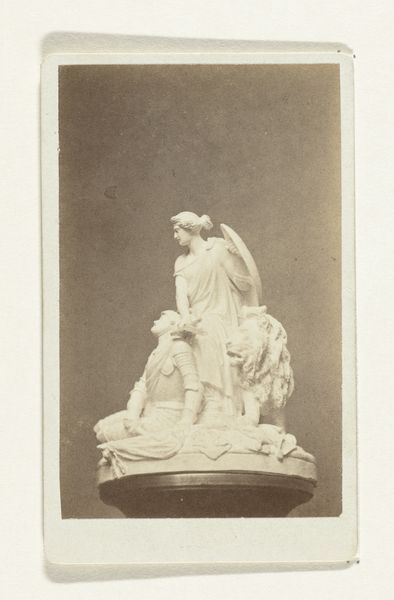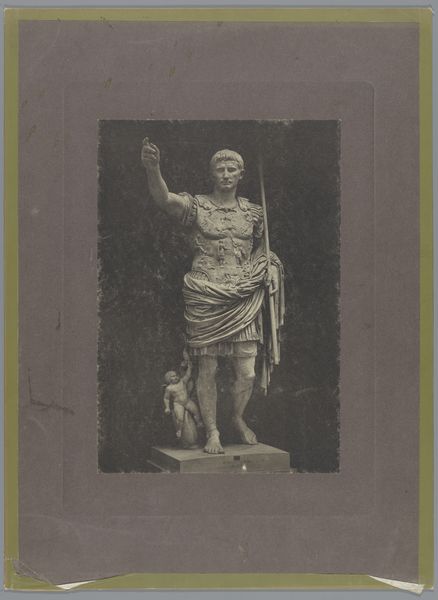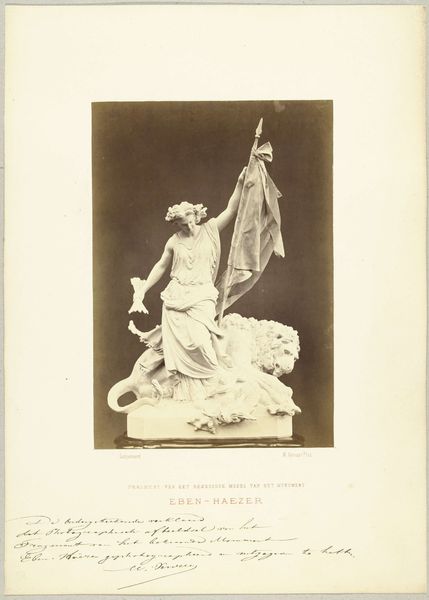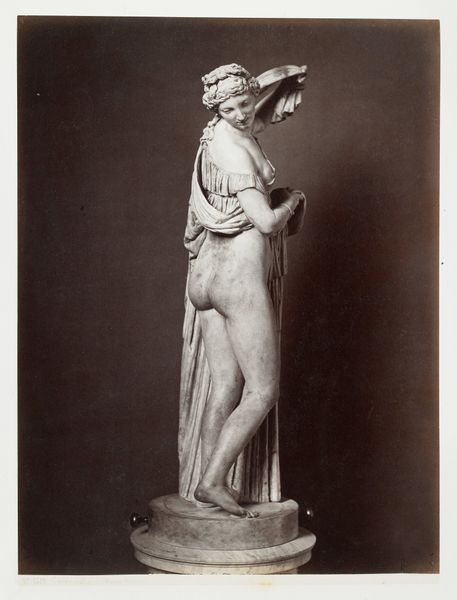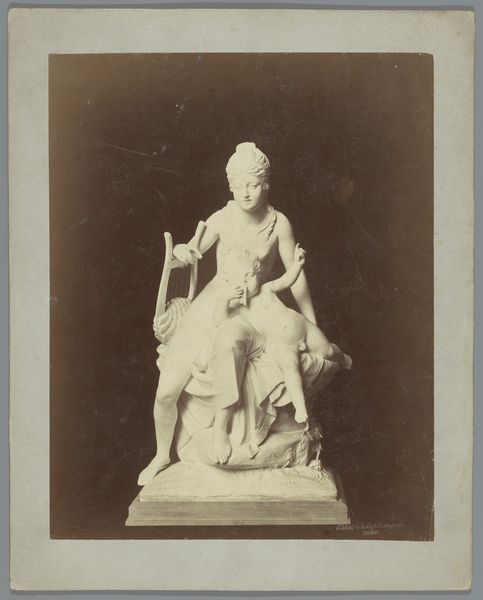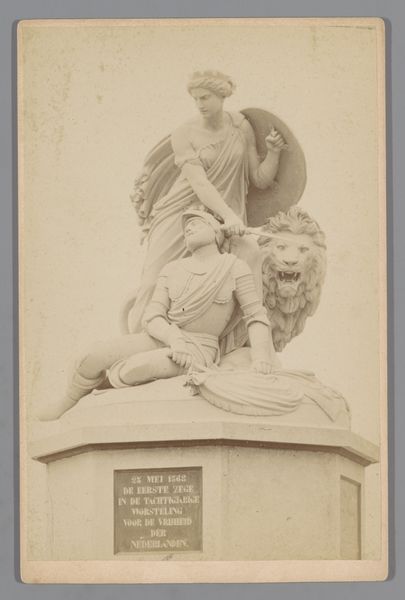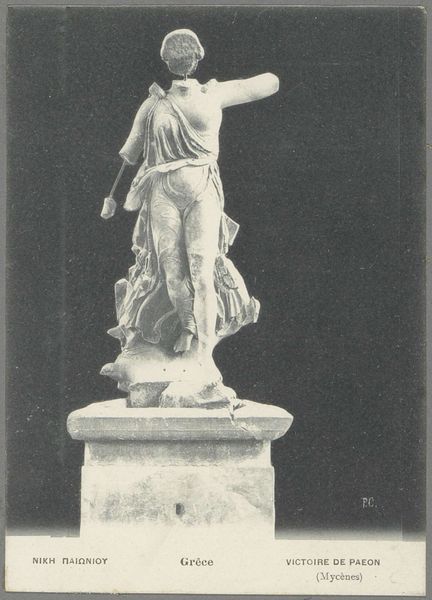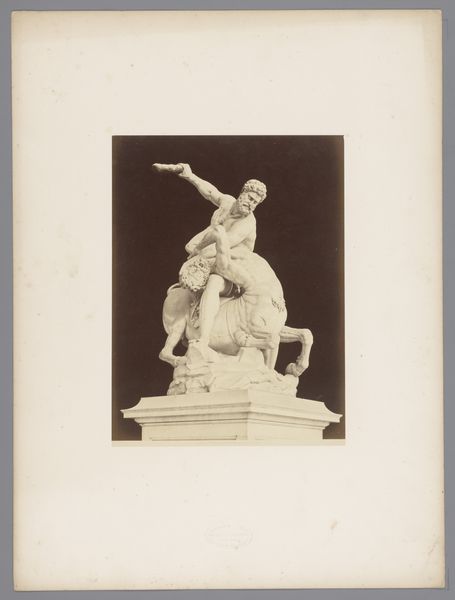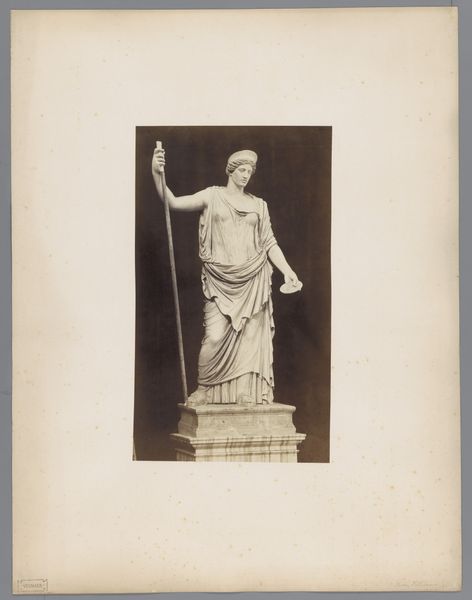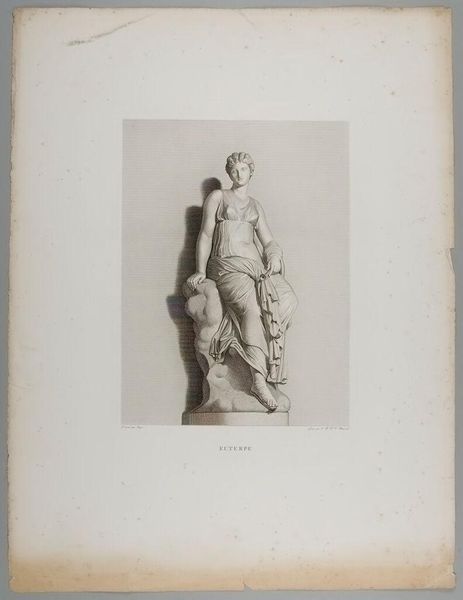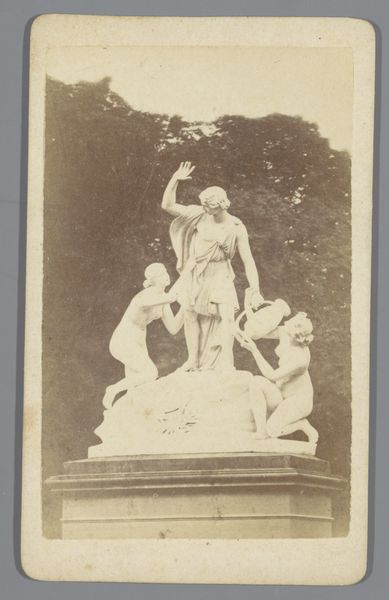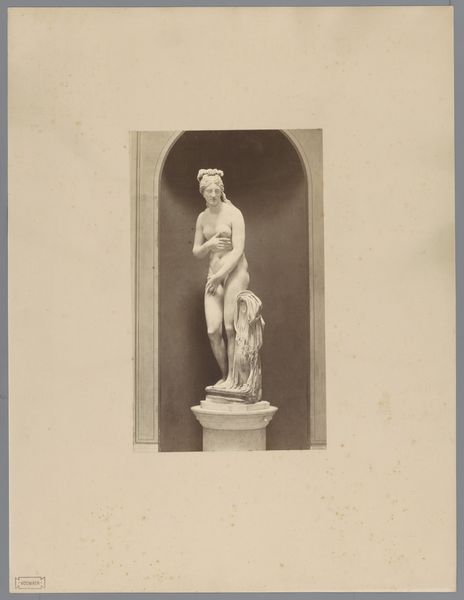
Model voor het monument ter herinnering aan de slag bij Heiligerlee, 1868 1868
0:00
0:00
Dimensions: height 89 mm, width 54 mm
Copyright: Rijks Museum: Open Domain
Curator: Here we have a photographic reproduction of "Model voor het monument ter herinnering aan de slag bij Heiligerlee, 1868" by Johannes Hinderikus Egenberger. The photograph captures a sculpture likely crafted in marble. Editor: My initial impression is one of contained energy, despite the classical pose. The figures—a warrior, an allegorical figure of triumph, and the lion—are tightly composed, almost claustrophobic within the frame. The neutral tonality heightens the dramatic tension. Curator: The photograph offers us a unique lens through which to appreciate Egenberger's envisioned monument. We see clear Neoclassical elements: the idealized human forms, the balanced composition, and of course, the reference to ancient Greek sculpture. It echoes classical themes of heroism and victory. Editor: Right, the heroic pose is intentional, drawing a direct lineage back to antiquity, but I'm intrigued by the use of marble as both a material and symbolic choice. Marble, traditionally associated with wealth and status, is deployed in service of nationalist rhetoric and in what I gather from the title, a commemoration of some historical victory. Consider also the act of reproducing sculpture via photography—it democratizes access and extends the reach of power, subtly reinforcing those narratives. Curator: Precisely. And within that act of reproduction lies an additional layer. The stark lighting emphasizes the cool, smooth texture of the sculpture and flattens its form, creating a compelling contrast with the turbulent scene depicted. It removes the work from any overt context, placing the full emphasis on pure, idealized form and composition, echoing the ideals of Neoclassical art theory. Editor: I find that transition—from handcrafted marble sculpture to mass-produced photographic print—reveals much about the late 19th-century’s shifting social and material conditions. One method for conveying historical or political ideals—sculpture—giving way to another—photography—highlights the increasing speed and changing landscape of communication at this point in history. Curator: It leaves us pondering the choices inherent in crafting a monument, not just of stone, but of image as well. Editor: Agreed. This photo offers insights not just into the past the artist wanted to present, but how he could transmit his historical memory by democratizing sculpture and image-making using a new technology, photography.
Comments
No comments
Be the first to comment and join the conversation on the ultimate creative platform.
